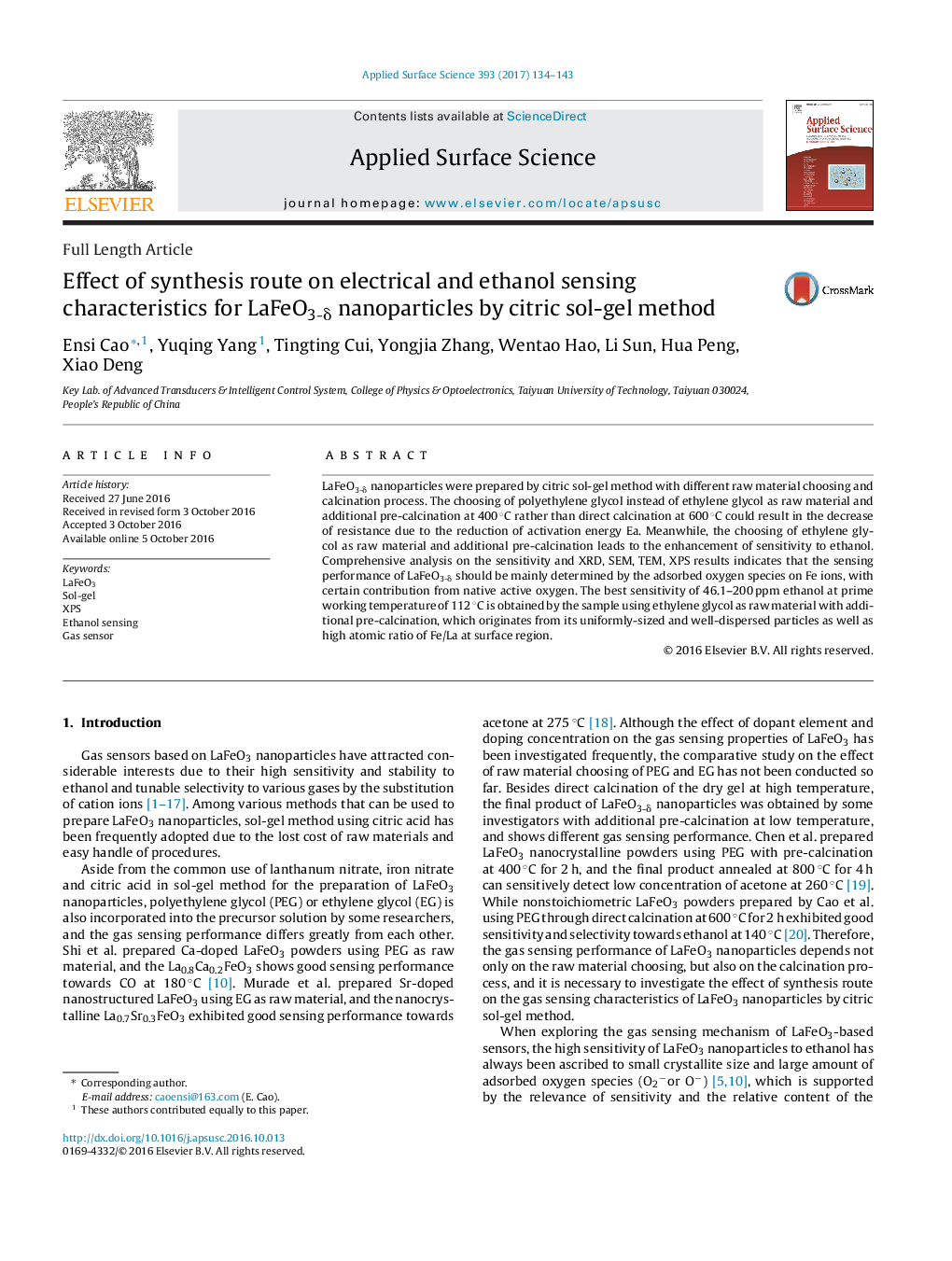| Article ID | Journal | Published Year | Pages | File Type |
|---|---|---|---|---|
| 5348248 | Applied Surface Science | 2017 | 10 Pages |
Abstract
LaFeO3-δ nanoparticles were prepared by citric sol-gel method with different raw material choosing and calcination process. The choosing of polyethylene glycol instead of ethylene glycol as raw material and additional pre-calcination at 400 °C rather than direct calcination at 600 °C could result in the decrease of resistance due to the reduction of activation energy Ea. Meanwhile, the choosing of ethylene glycol as raw material and additional pre-calcination leads to the enhancement of sensitivity to ethanol. Comprehensive analysis on the sensitivity and XRD, SEM, TEM, XPS results indicates that the sensing performance of LaFeO3-δ should be mainly determined by the adsorbed oxygen species on Fe ions, with certain contribution from native active oxygen. The best sensitivity of 46.1-200 ppm ethanol at prime working temperature of 112 °C is obtained by the sample using ethylene glycol as raw material with additional pre-calcination, which originates from its uniformly-sized and well-dispersed particles as well as high atomic ratio of Fe/La at surface region.
Related Topics
Physical Sciences and Engineering
Chemistry
Physical and Theoretical Chemistry
Authors
Ensi Cao, Yuqing Yang, Tingting Cui, Yongjia Zhang, Wentao Hao, Li Sun, Hua Peng, Xiao Deng,
